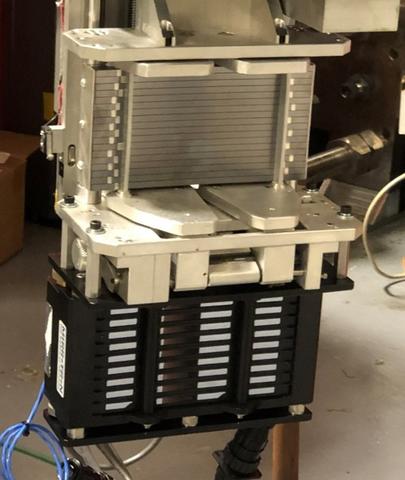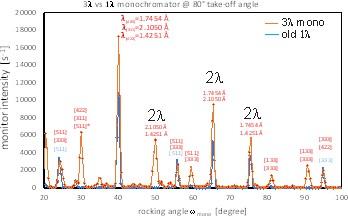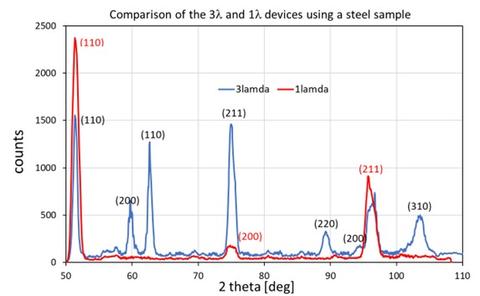Monochromator
The new instrument features two double focusing monochromators based on elastically bent perfect silicon crystals: one of the single wavelength type (Si(400) or Si(311)) and a novel triple wavelength composite device for simultaneous Si(311)/(400)/(422) diffraction.

Almost all materials and samples investigated at BT-8 have cubic crystal symmetry, resulting in a small number (£2) of reflections available at 2q»90°. The 3l device can map ³4 reflections (hkl) in an angular window of D2q=±8° around the detector angle with no or minimal peak overlap, therefore increasing the number of diffracting grains and reducing the influence of elastic and plastic anisotropy. While the single wavelength performance of the 3l device is by necessity lower than that of the 1l device the integral flux from the 3l device is more than 50% higher. The largest benefits from the 3l device are expected for measurement of applied stress and preferred orientation.
Comparison of neutron monitor count rates vs. the monochromator rotation angle. Numerous wavelength combinations can be produced depending on the monochromator rotation angle. The highest flux is achieved in the symmetric position w=40° for a take-ff angle of 2qmono=40°.

Sample reflections for steel, showing a group of four independent (hkl) from 88° to 104° that can be measured simultaneously.

The single wavelength performance of the 1l device is approximately 50% higher. However, the ability of the 3l device to measure several peaks simultaneously still offers substantial advantages over the 1l device whenever multiple peaks are necessary; this applies to measurements of texture and applied stress.
Contacts
-
(301) 975-5380

